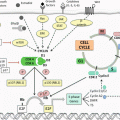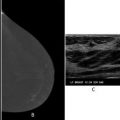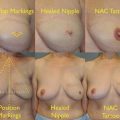Study
Year published
Study period
Percentage increase in CPM of all patients over the study period
Percentage increase in CPM of all mastectomy patients over the study period
Data source
Tuttle et al. [17], (invasive cancer)
2007
1998–2003
2.7%
6.8%
SEER
Tuttle et al. [18], (DCIS)
2009
1998–2005
3.1%
12.0%
SEER
Yao et al. [19]
2010
1998–2007
4.3%
NA
NCDB
Jones et al. [20]
1998–2007
NA
9.6%
Ohio state-NCCN network
King et al. [15]
2011
1997–2005
NA
17.5%
MSKCC single institution
Kummerow et al. [21]
2015
1998–2011
9.3%
24.3%
Pesce et al. [23]
2014
2003–2010
5.6%
NA
NCDB
Kurian et al. [22]
2014
1998–2011
10.3%
NA
California cancer registry
Wong et al. [24]
2016
1998–2012
8.8%
NA
SEER
Contralateral Prophylactic Mastectomy and Survival
Although multiple single and multi-institutional studies published over the past 10–15 years in the United States have shown that CPM improved overall and disease-free survival, none are prospective randomized studies (Table 3.2), and therefore all studies are subject to selection bias [22, 29–36]. It is unlikely that a randomized trial of CPM versus UM or lumpectomy will be done in the near future. A Cochrane analysis published in 2009 concluded that CPM did not provide a survival benefit [37]. Four single [29, 32, 36, 38] and three multi-institution [30, 31, 35] retrospective studies demonstrated a disease-free survival benefit for CPM, while two single [32, 39] and three multi-institution [30, 34, 35] retrospective studies showed an overall survival benefit. A recent SEER study [35] showed that when CBC cases were removed from the analysis, it had little impact on CPM’s survival benefit which shows that CBC has little to do with survival. In another SEER study of stages I–III patients, CPM was associated with breast cancer specific, all-cause and noncancer survival benefit, but its greatest effect was on noncancer survival [40]. Patients who undergo CPM may be more healthy and more compliant with their treatment regimens and have access to more advanced treatments then patients who do not undergo CPM.
Table 3.2
Single and multi-institutional studies examining disease-free and overall survival in patients undergoing contralateral prophylactic mastectomy
Study | Year published | No pts CPM | Data source | DFS/DSS (adjusted) | OS (adjusted) | Follow-up |
|---|---|---|---|---|---|---|
Peralta E et al. [29] | 2000 | 64 | Retrospective | DFS: 71% CPM vs. 53% control (p = 0.06) | 64% CPM vs. 48% control (p = 0.26) | Mean: 6.8 years |
Single institution | ||||||
Herrinton LJ et al. [30] | 2005 | 1072 | Cancer Research Network, Kaiser Permanente | Disease-specific survival: HR = 0.57 (95% CI, 0.45–0.72) | All-cause mortality: HR = 0.60 (95% CI, 0.50–0.72) | Median: 5.7 years |
Bedrosian I et al. [31] | 2010 | 8900 | SEER | HR = 0.63 (95% CI, 0.57–0.69) | NA | Median 47 months |
Brewster AM et al. [32] | 2012 | 532 | Retrospective | DFS: HR = 0.75 (95% CI, 0.59–0.97) | OS: HR-0.74 (95% CI 0.56–0.99) | Median: 4.5 years |
Single institution | ||||||
Boughey J et al. [36] | 2011 | 385 | Retrospective | DFS: HR = 0.67 (95% CI, 0.54–0.84) | OS: HR = 0.77 (95% CI, 0.60–0.98) | Median: 17.3 years |
Single institution | ||||||
Chung A et al. [33] | 2012 | 177 | Retrospective | No difference in DFS between unilateral mastectomy and unilateral mastectomy/CPM (p = 0.081) | No difference in OS between unilateral and unilateral mastectomy/CPM (p = 0.42) | Median: 61 months |
Single institution | ||||||
Yao et al. [34] | 2013 | 14,994 | NCDB | NA | OS: HR = 0.88 (95% CI, 0.83–0.93) | Median: 5 years |
Kruper et al. [35] | 2014 | 26,526 | SEER | DSS: HR = 0.83 (95% CI 0.77–0.90) | OS: HR = 0.77 (95% CI, 0.73–0.82) | NA |
Kurian et al. [22] | 2014 | 11,692 | California Cancer Registry | NA | OS: HR = 1.02 (95% CI, 0.94–1.11) | Median: 89.1 months |
Wong et al. [24] | 2016 | 226,914 | SEER | DSS: HR = 1.08 (95% CI 1.01–1.16–0.97) | OS: HR = 1.08 (95% CI 1.03–1.14) | Median 8.25 years |
On the other hand, CPM may truly benefit those who have a high CBC risk such as those patients who test positive for a genetic mutation. Retrospective studies have shown that BRCA mutation carriers derive a survival benefit from CPM [41], which is understandable given the high CBC risk for BRCA carriers [42–44]. There have been no randomized prospective studies of BRCA carriers. CBC risk for other gene mutation carriers who have a breast cancer are not well studied although two studies have shown a higher CBC rate for CHEK2 1100delC mutation carriers [45, 46]. Insufficient data exist to routinely recommend CPM for gene carriers besides BRCA1 and BRCA2.
Contralateral Breast Cancer Risk
Many women choose CPM to reduce their risk of a contralateral cancer [72], but they often overestimate their CBC risk [47] at 30% at 10 years when most population based studies show a 5% or less risk at 10 years for average risk patients [48, 49]. Population-based studies and clinical trials (Table 3.3) [30, 48–56] that track CBC rates have shown that the CBC risk at 10 years is <=5%. CBC risk is lower for ER positive tumors, likely related to the protective effect of hormonal therapy on the contralateral breast. A SEER study from 2009 showed that CBC rates have been dropping 3%/year, likely secondary to the use of hormonal therapy [49]. An EBCTCG overview quotes a 0.4% and 0.5% annual risk of CBC for estrogen receptor (ER) positive and negative patients [57]. This translates into an approximate 4% risk at 10 years for ER positive tumors versus a 5% risk for an ER negative tumor. Younger patients are at higher risk for CBC, presumably because of their longer life span. A SEER study [61] reported that the 10-year CBC risk for a woman 25–29 years old with an ER negative tumor is 1.26 per 100/year compared to 0.45 per 100/year for an ER positive tumor. In contrast, the 10 year risk for a 50-year-old women with an ER negative tumor is 0.45 per 100/year compared to 0.26 per 100/year for an ER positive tumor. Family history also influences CBC rates. A Women’s Environmental Cancer and Radiation Epidemiology [54] study showed that women with a first degree relative with breast cancer have a CBC risk at 10 years of 14.7% for those 30 years old, but this risk decreases to 6.7% for women in their 50s. These data demonstrate a differential risk for CBC according to patient age, ER status , and family history, but future studies are needed to determine other clinical factors that could influence CBC risk.
Table 3.3
Studies examining contralateral breast cancer rates
Study | Publication year | Data source | Follow-up | CBC risk |
|---|---|---|---|---|
I. Soerjomataram et al. [50] | 2005 | Eindhoven Cancer Registry | 4.9 years | SIR 3.5 (CI 3.2–3.8) |
Gao et al. [48] | 2003 | SEER | 5 years | 3.0% |
10 years | 6.1% | |||
15 years | 9.1% | |||
20 years | 12% | |||
Herrinton L et al. [30] | 2005 | Cancer Research Network | 5.7 years | 2.7% |
Kaiser Permanente | ||||
Cuzick et al. [51] | 2010 | ATAC trial | 5 years | 1–1.8% |
10 years | 3.2% armidex arm | |||
4.9% tamoxifen arm | ||||
Nichols et al. [49] | 2011 | SEER | 10 years | 0.26 per 100/year (50 years old ER positive) |
0.45 per 100/year (50 years old ER negative) | ||||
Perez EA et al. [52] | 2011 | Herceptin trials | 4 years | 0.5–1.0% control arm |
NCCTG N9831 and NSABP B31 | 0.7–0.9% herceptin arm | |||
Wapnir IL et al. [53] | 2011 | NSABP B17/B24 | 15 years | 10% lumpectomy |
10.2–10.8% lumpectomy/XRT | ||||
7.3% lumpectomy + Tamoxifen | ||||
Reiner et al. [54] | 2012 | WECARE | 10 years | 4.6–15.6% depending on family history |
Non-BRCA carriers with family hx | ||||
Pilewskie M et al. [55] | 2014 | Single institution | 8 years | 3.5% MRI |
MKSCC | 5.1% no MRI | |||
McCormick B. et al. [56] | 2015 | RTOG 9804 | 7 yrs | 4.8% tamoxifen + observation |
DCIS patients | 3.9% tamoxifen + radiation |
Characteristics of Contralateral Breast Cancers and Survival of Those Patients Who Develop a Contralateral Breast Cancer
Many studies have shown that CBCs tend to have more favorable tumor characteristics than the primary tumor [58–62]. Studies have also shown that patients who develop a CBC have worse survival especially if the CBC develops in a short interval from the primary cancer [60, 63–65]. Patients who had worse survival with a CBC were young patients, patients with large tumors, and node positive patients [60, 63, 64]. It is not clear if the reported worse survival is because these CBCs represent aggressive biology of the primary tumor, distant metastatic disease, or perhaps just older, inferior systemic treatments [60, 63, 64].
Patient Perspectives on CPM
Patient Motivations for Choosing CPM
Although up to 10–20% of all women are undergoing CPM in the current era, half of all women consider CPM somewhere in the preoperative setting [66]. This preference was associated with higher levels of cancer worry, young age, and low knowledge about breast cancer [66]. The most common reasons to choose CPM revolve around a perceived survival benefit from CPM and fear of a second breast cancer in the contralateral breast. In a multi-institutional study of 123 young women, “desire to lower the chance of getting cancer in the other breast” was ranked as the most important reason women chose CPM with 98% of women stating it was extremely or very important in their decision to undergo CPM [67]. The third most common reason was to “improve survival” with 94% stating it was extremely or very important and desire to prevent cancer from spreading to other parts of the body was the fourth most common reason with 85% stating it was extremely or very important. Other studies have confirmed these findings [68–70]. Many patients have high levels of preoperative “cancer worry” and fear of recurrence [66, 67], and cancer worry has been associated with CPM interest and the performance of CPM [66]. Anxiety and worry are also likely a cause of cognitive dissonance; women choosing CPM to improve survival often correctly answer questions regarding the lack of CPM’s association with recurrence and survival [67]. At the same time, there are many other reasons that women choose CPM. These include family history, avoiding screening mammograms and biopsies [67–69], cosmetic concerns, and for “peace of mind”. Symmetry concerns were extremely or very important to 57% of participants in the young women study [67] and 59% of women in another study stated that reconstructive surgery availability influenced their decision [13]. Friends, family, and spouses also influence patients [68, 70], particularly if one of these individuals has been through breast cancer or another cancer .
Patient Satisfaction and Quality of Life with CPM
Most studies have shown that women are generally very satisfied with their decision to undergo CPM. Satisfaction rates with CPM range from 80 to 97%, and the same percentage would have chosen CPM again if given the choice [39, 67–69]. Even studies with longer follow-up show a high satisfaction rate with CPM [71]. However, retrospective studies have shown that QOL is similar between CPM and non-CPM patients. Less contentment with QOL was associated with poor health perception overall, not the decision to undergo CPM [72]. A recent study cross-sectional study of over 7000 women at approximately 5 years after surgery showed that although psychosocial well-being was statistically higher in the CPM group versus other surgery groups, the difference was too small to be clinically significant [73].
Nonetheless, women do report dissatisfaction with CPM related to reconstructive procedures or unexpected subsequent procedures and cosmetic outcomes. Nearly a third reported that CPM had a negative effect on body appearance [71]. A report with longer follow-up showed that body appearance, feelings of femininity, and sexual relationships were negatively affected in 23–31% of patients [74]. A recent report also showed that nearly 40% of those who had reconstruction had at least one unplanned reoperation [39]. Reoperation was associated with lower satisfaction with CPM, lower likelihood of undergoing reconstruction again, and lower likelihood of choosing CPM. In a more recent study of young women, approximately 30% reported that surgical outcomes were worse than expected, especially regarding chest wall numbness and the need for multiple procedures [67]. A more recent study utilizing the Breast Q assessed patient’s satisfaction with breast appearance and outcomes between CPM and UM patients with implant reconstruction [75]. They reported that CPM was an independent predictor of satisfaction with the breasts but not breast reconstruction outcome satisfaction. One prospective study conducted in Sweden showed that QOL, anxiety, depression, and sexuality were no different before and after CPM but that approximately 50% of women reported at least one body image problem postoperatively [76]. Despite high satisfaction with CPM, women do report negative effects as well.
Stay updated, free articles. Join our Telegram channel

Full access? Get Clinical Tree







